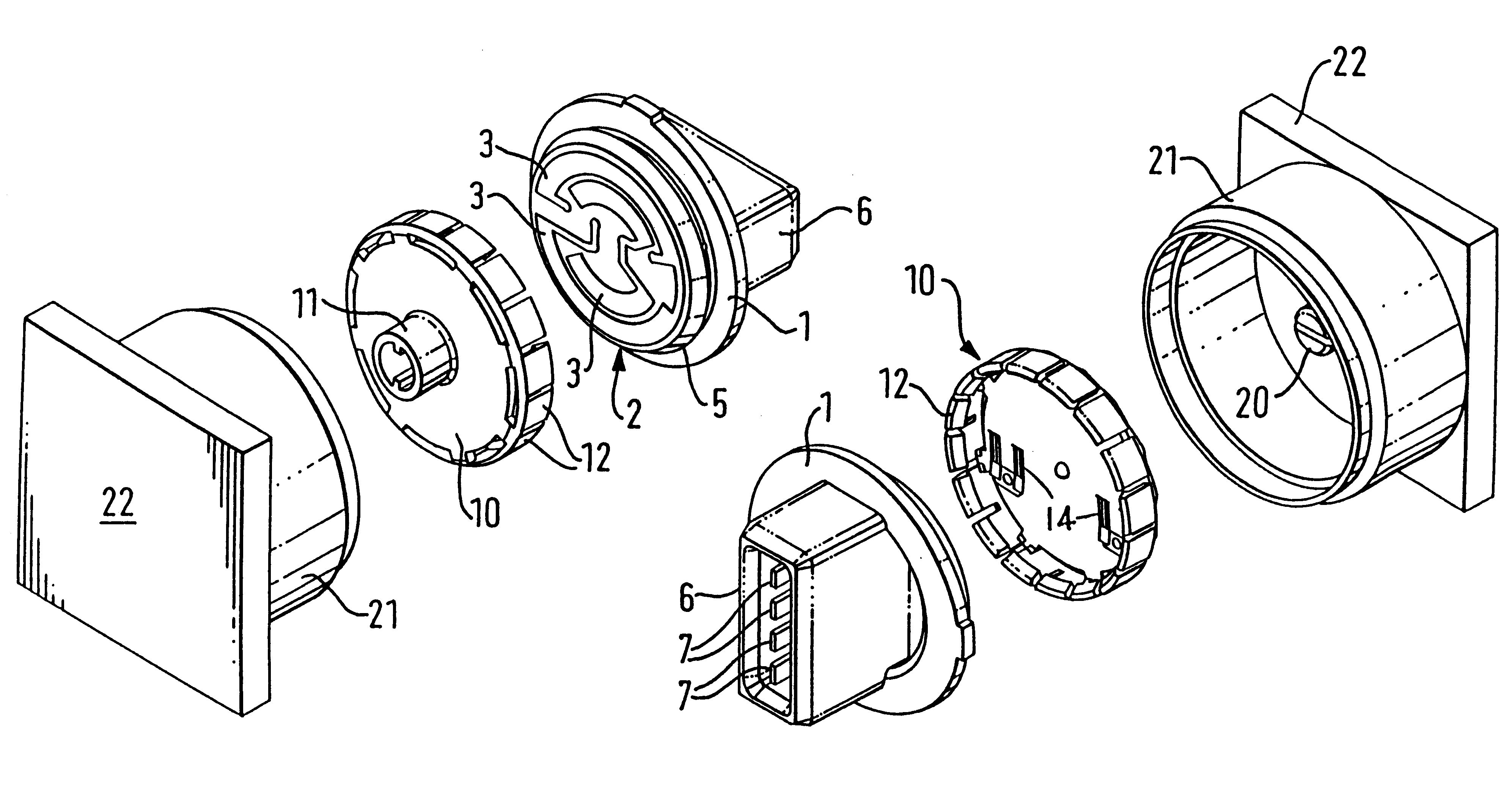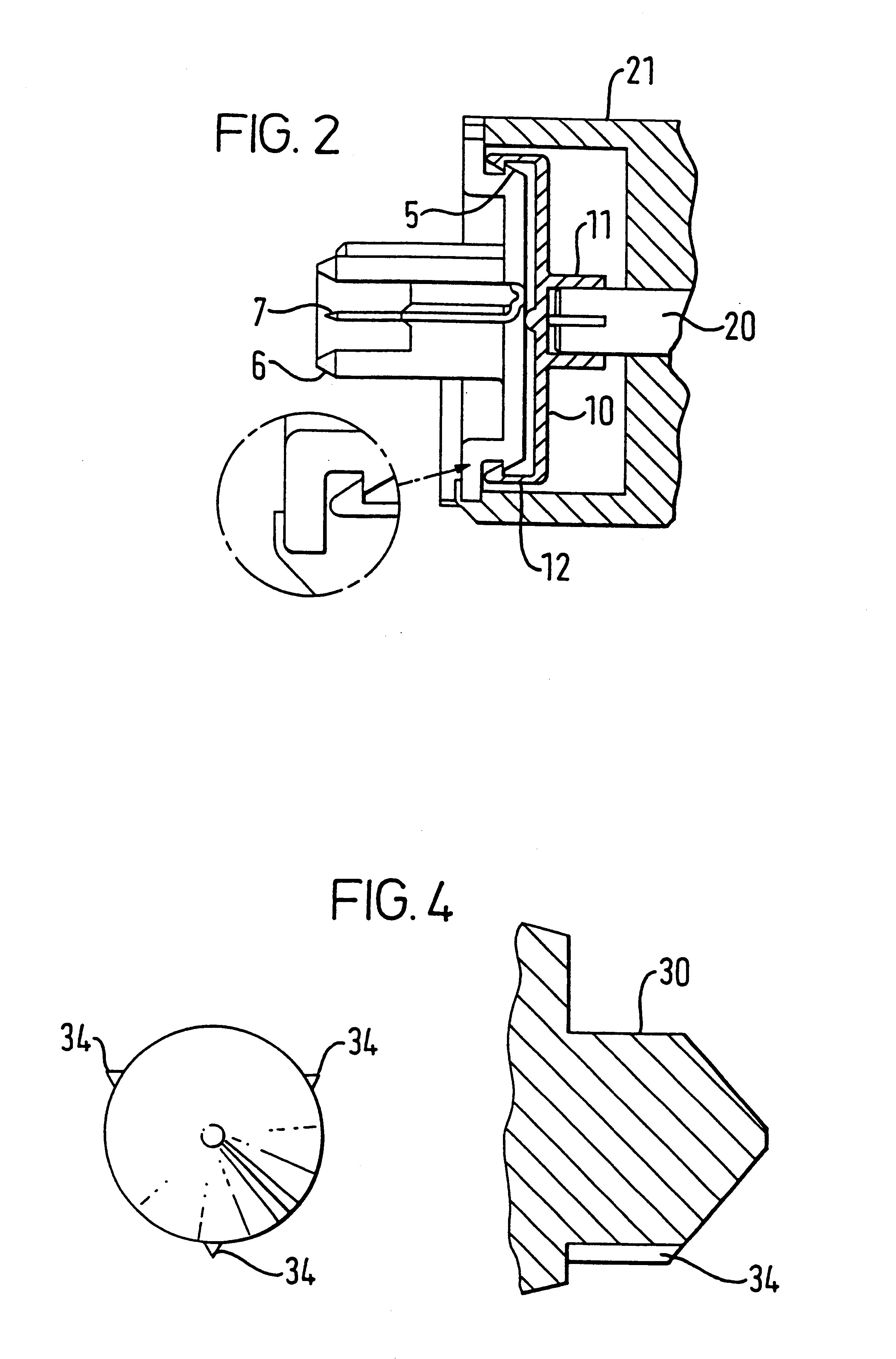Potentiometric position sensors
a technology of position sensors and potentiometers, applied in the direction of resistors, instruments, converting sensor output, etc., can solve the problem of not being able to easily pull apart, and achieve the effect of simple and easy handling and installation
- Summary
- Abstract
- Description
- Claims
- Application Information
AI Technical Summary
Benefits of technology
Problems solved by technology
Method used
Image
Examples
Embodiment Construction
.
The invention is further explained and illustrated by way of example with reference to the accompanying drawings in which:
FIG. 1 shows an exploded view and from two different directions a rotary potentiometer sensor assembly suitable for fitting to a throttle body, for example forming part of a motor vehicle,
FIG. 2 is an axial section through the assembled sensor arrangement of FIG. 1,
FIG. 3 is an axial section of alternative rotary and insulative substrats members, and showing a typical printed track arrangement, and
FIG. 4 is a section through a further alternative rotary and insulative substrate member again showing the track arrangement and with a detail of a self-centring pin.
Referring first to FIG. 1, this shows an exploded view from two different directions of a rotary potentiometer sensor structure in accordance with the invention. An insulating substrate member 1 moulded from a suitable plastics material includes on one side a circular face 2 on which are a number of pre-pr...
PUM
 Login to View More
Login to View More Abstract
Description
Claims
Application Information
 Login to View More
Login to View More - R&D
- Intellectual Property
- Life Sciences
- Materials
- Tech Scout
- Unparalleled Data Quality
- Higher Quality Content
- 60% Fewer Hallucinations
Browse by: Latest US Patents, China's latest patents, Technical Efficacy Thesaurus, Application Domain, Technology Topic, Popular Technical Reports.
© 2025 PatSnap. All rights reserved.Legal|Privacy policy|Modern Slavery Act Transparency Statement|Sitemap|About US| Contact US: help@patsnap.com



